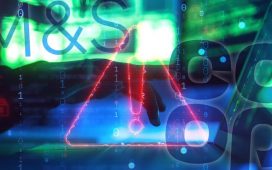A virus that infected the first animals hundreds of millions of years ago is now essential in human development, research has revealed.
The new study has found that DNA from the virus now plays a vital part in human embryo development, especially in the hours after fertilisation.
Between eight and 10% of the human genome comes from these so called ‘endogenous retroviruses’ – much more than lives on from our Neanderthal cousins – but until now this DNA has been considered junk.
Research from the Spanish National Cancer Research Centre (CNIO) has now uncovered that this supposed junk DNA is crucial in triggering an embryo to split from two cells into four.
This is known as the point when it becomes pluripotent, meaning every cell can become any type of cell in the body, whether a cone cell for seeing colour in the eye or cardiac cell in the heart.
Before that point the two cells are known as totipotent.
‘Until recently, these viral remnants were considered to be “junk DNA”, genetic material that was unusable or even harmful,’ said first author Sergio de la Rosa.
‘Intuitively, it was thought that having viruses in the genome could not be good.
‘However, in recent years we have started to realise that these retroviruses, which have co-evolved with us over millions of years, have important functions, such as regulating other genes.
‘It’s an extremely active field of research.’
The research, published in the journal Science Advances, found that this ancient virus, called the MERVL endogenous retrovirus, sets the pace in embryo development.
What is a retrovirus?
A retrovirus is a virus that inserts its own RNA into the DNA of the cell it is infecting, changing its genome.
When the cell multiplies, all future cells contain the foreign genetic material.
Some retroviruses can cause serious diseases, such as HIV and leukaemia.
The process involves a gene called URI, which has previously been found to stop embryo development in animals when it is deleted.
A protein called MERVL-gag, which comes from this animal retrovirus, has now been revealed to modulate the action of URI.
When levels of the protein are high, it prevents URI from acting. As levels of the MERVL-gag protein fall, URI swings into action, and the cells multiply.
‘It is a totally new role for endogenous retroviruses,’ said senior author Dr Nabil Djouder.
MORE : Siberian ‘zombie’ viruses could trigger terrifying new pandemic, scientists warn
MORE : Thousands living with potentially deadly virus spread by toothbrushes
MORE : Zoo poo virus could save diabetes patients from limb amputations
Get your need-to-know
latest news, feel-good stories, analysis and more
This site is protected by reCAPTCHA and the Google Privacy Policy and Terms of Service apply.













